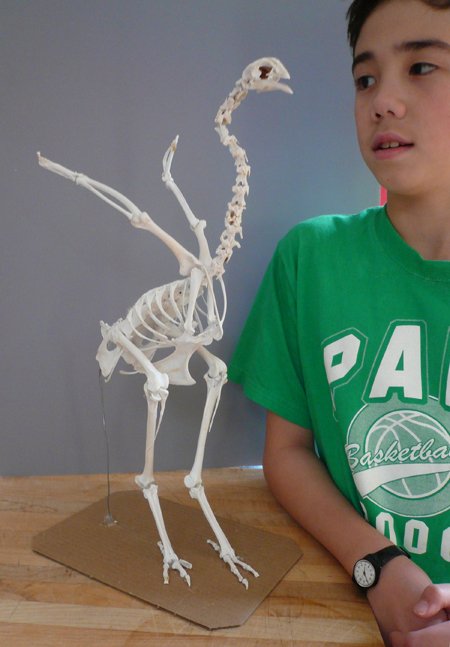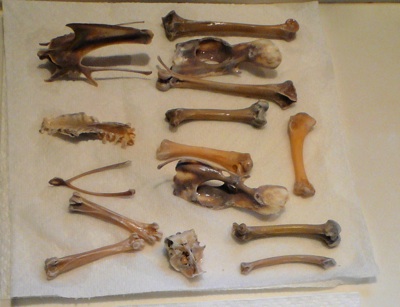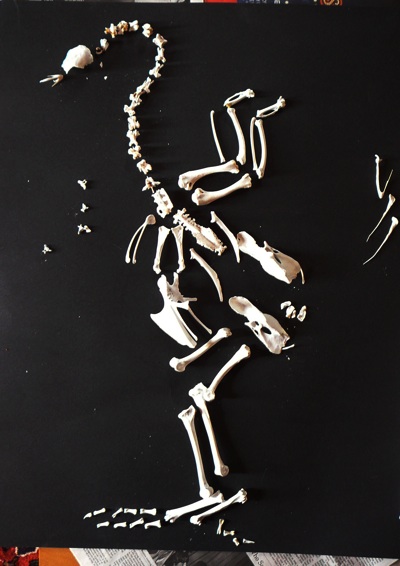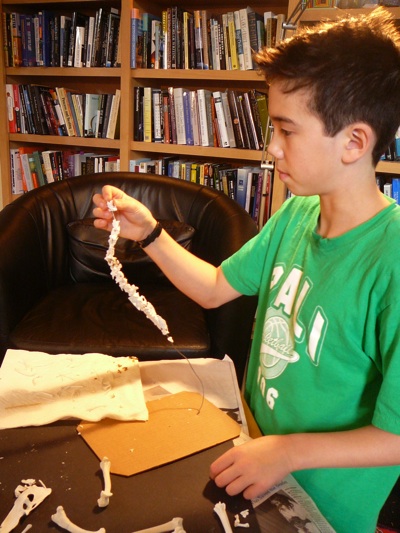基于问题的学习——范例项目:动机
PROJECT TITLE: Motivation Strategy
项目标题:积极性策略
Project Aim
项目目标
Create and present a plan with specific strategies for improving the employee’s motivation in the workplace, based on a clear understanding of the person’s needs, values and situation.
创建并展示一项计划,通过对个人的需求、价值和状况的清楚理解,包含有提高增进雇员在工作场所的积极性的具体策略。
Learning Outcomes
预期成果
1. Explain the significance of knowledge and understanding to motivation.
2. Identify tangible rewards and negative motivators appropriate to a specified motivation problem.
3. Integrate factual information with theoretical information to derive a sensible solution to a motivational problem within a limited time frame.
4. Plan the initiation of motivational action in response to a specified motivation problem.
5. Plan actions for sustaining motivation in a specified workplace situation.
- 阐述知识和对动机的理解的重要性。
- 针对具体动机问题,确定相应的物质奖励和负面因素。
- 在一个有限的时间内,就某个动机问题,理论联系实际,得出一个明智的解决办法。
- 对启动回应具体动机问题的激励行为,做出计划。
- 就具体工作状况计划出维持动机的行动。
Problem Definition
问题定义
You are a supervisor in a workplace, in charge of 10 employees.
你是某工作场所的管理者,负责十名雇员。
Over the last few weeks, you have noticed a change in behaviour in one employee. This person is usually efficient, cheerful, cooperative, accurate, energetic and productive. Two months ago, the person’s spouse unexpectedly left, clearing out the bank account. Since then, he/she has become increasingly withdrawn, gloomy, slow to complete tasks, and forgetful. The standard of his/her work has fallen, and co-workers are beginning to complain. This person is also a friend with whom you sometimes go jogging. You have also noticed that he/she has lost interest in social or physical activities, and in maintaining a healthy diet.
在过去数周,你注意到一名雇员的行为发生改变。此人以往有效率、开朗、合群、准确、充满活力且富有成效的。两个月以前,此人的配偶出人意料出走,并席卷银行账户。从那以后,他就变得越来越孤僻、忧郁、难于完成任务,以及健忘。他的工作质量有所下降,合作者开始抱怨。此人也是有时和你一起慢跑的朋友。你也注意到他失去了对社会活动或体育活动的兴趣,也不再保持健康的饮食习惯。
Your task: Plan a strategy to motivate this employee that also considers workplace requirements and conditions.
你的任务:制定一项策略,激励该员工重新考虑工作场所的需求和条件。
Team Structure and Mode of Interaction
团队结构与互动模式
Being a relatively short project, the quantity of interaction with others needs to be limited.
作为一项比较短的项目,与其他人的互动的次数必须受到限制。
Your team will consist of yourself and your tutor. You are in the hypothetical role of a supervisor in the workplace. Your tutor is in the hypothetical role of an industrial relations consultant. You should approach your tutor in the same way that you would approach an industrial relations consultant.
你的团队包括你自己和你的导师。你扮演某工作场所的管理员。你的导师扮演一名生产关系顾问。你应当像跟真实的生产关系顾问打交道那样和你的导师打交道。
- You must contact your tutor two times via phone, fax or email during the project, before attempting to commence the final submission. At each point of contact, you should be mindful that the hypothetical consultant (tutor) is both an expert but also one that charges by the hour; so questions you put should be meaningful, designed to contribute toward achieving the stated project aim, and above all, should not be repetitive. Contact should be concise and time efficient.
- 在项目期间,开始结题之前,你必须通过电话、传真或者邮件,与你的导师联系两次。每次联系的时候,你都要记住,导师的虚拟角色不管是一名专家,也是要按时收费的。因此你提的问题要有意义,旨在有助于实现设定的项目目标,尤其是,不要重复。每次联系都应该简明扼要、富有时效。
- You must also seek support from your tutor and any other interested parties within the school community, by submitting relevant questions to a student room forum, seeking meaningful feedback, on at least two occasions during the project, before attempting to commence the final submission. You must also check for responses and if useful, incorporate the responses into your final report.
- 你也应当从你的导师和学校社区其他任何感兴趣的人寻求支援,提交相关问题到学生讨论会上,寻找有意义的反馈,在整个项目过程中、开始结题之前至少两次。你也应当检查反馈,如果有用,你可以将其整合进你的结题报告中。
You may ask for guidance, assistance or simply report on your progress. You may request more frequent assistance if necessary, within reason. It is not your tutor’s role to solve the problem.
你可能会寻求指导、援助,或者仅仅是一次简单报告你的进度。如果必需的话,又有合理的理由,你可能要请求更频繁的援助。你的导师不负责帮你解决问题。
Discussion Questions
讨论问题
- Why is an understanding of grief relevant to this situation?
- 为什么和这个状况相关的是一个悲伤的认识呢?
- Which key factors affecting this person’s behaviour can you expect to influence and which might you not expect to influence?
- 在影响到该员工的行为的关键因素当中,哪些是你可以预测到其影响力的,哪些是你不能预测的?
- What are reasonable goals in motivating a person in this situation?
- 什么样的目标是在这种情况下激励人的合理目标?
- How can you ensure that co-workers are not adversely affected by this person’s current attitude or by any individual attention that he/she may receive?
- 你如何确保合作者没有受到该员工的态度,或者他可能受到的个人关注的不利影响?
- How can Maslow’s hierarchy of needs help clarify this person’s changing needs?
- 马斯洛的层次需求如何有助于澄清该员工的需求改变?
- What are reasonable parameters or boundaries when friendship and workplace roles overlap?
- 当朋友关系和工作关系发生重叠的时候,有哪些合理的参数或划分边界?
These are issues or questions that you should address in your solution, whether or not you can find answers.
这些都是你将要在你的解决方案中需要解决的,你可能会得到答案,也可能不。
Resources
资源
Human resources (optional) – You may draw on the skills, knowledge and assistance of others – other students, experts whom you consult, friends. All assistance must be formally acknowledged.
人力资源(可选):你可以利用其他人——你能联系到的其他同学、专家,朋友——的技能、知识和援助。所有援助都必须得到正式认可。
Other resources (compulsory)– You are expected to use some resources, but the choice of which ones are yours) You may gather the information required to solve this problem from course readings, books, journals, news programs, the internet, etc. All sources must be acknowledged.
其他资源(必要):估计你会使用到的某些资源,具体使用哪一项由你自己决定。你可能会从课本、书籍、期刊、新闻节目、网络等处收集解决问题所必需的信息。所有资源都必须得到认可。
Internet Resources may include:
网络资源包括:
http://www.counsellingpsychologistlondon.com/depression.html
http://www.careermotiv8.com/dpr.htm
http://www.accorservices.com/en/aboutus/solutions/bienetre/index.asp
Guidelines
指导
Duration - This project should take between 8-10 hours (including communications with a tutor or others). When 10 hours of work has been completed, submit what you have, no matter what stage it is in. You may be penalised for exceeding this time limit.
时间——该项目需要8-10个小时(包括与导师和其他人的交流时间)。当十个小时的工作时间结束以后,提交你所有资料,无论它还处在哪个阶段。超时可能会受到处罚。
Assessment - You will be assessed on your capacity to work through the problem to a logical conclusion. You are not being assessed on the report.
评估——将会对你解决问题的到合乎逻辑的结论的能力进行评估。不会根据你的报告进行评估。
The report will be part of what shows the school that you have worked through the problem in an appropriate way. Your interaction with a tutor, and use of a forum in the student room are also indicators that you have worked through the problem appropriately
报告将作为向学校展示的一部分,展示你利用适当的方式解决问题。你与导师的互动,对学生讨论会的利用,也都象征着你通过合适的方式解决问题。
Final Report
结题报告
You may use any if a variety of means to present your project but should not spend more than a quarter of the total time involved in the project, on preparing the presentation. Most students are likely to submit a written presentation, possibly with one or more illustrations. If you have the equipment at hand, and appropriate skills, it is acceptable for you to submit a presentation any other way (eg. Multi media presentation with Power point or Flash, Video, CD, DVD).
你可能会使用各种手段展示你的项目,但是在准备陈述时,不要在这上面花去项目总时间的四分之一。大多数学生可能都会提交一份书面陈述,可能包含若干插图。如果你手头有设备,又懂技术,你提交一份其他形式的演示(比如,使用了PowerPoint或者Flash、视频、CD、DVD的多媒体演示报告),也是可以的。
Your presentation must include:
你的汇报必须包括:
1. an account of the problem-solving process you experienced,
2. your solution,
3. a list of issues that arose during the project, that you either could not deal with or that were not essential to the project
4. a list of resources used, including human resources.
5. an evaluation of your performance, including what you did very well, and what you can improve
6. a precise summary of you learned about problem solving and motivation from this project.
- 一份你所经历的解决问题的过程的记录。
- 你的解决方案。
- 一份在项目过程中出现的问题列表,主要是你没有解决的,以及你认为没有必要解决的。
- 一份已用资源列表,包括人力资源。
- 对你表现的评价,包括你哪些做得好,哪些还要改进。
- 一份你从这个项目中学到的有关解决问题和动机的确切总结。
| Presentation Component | Minimum Required | Maximum Allowed |
| account of the problem-solving process | One paragraph or 1 minute presentation or equivalent | One page or 3 minute presentation or equivalent |
| your solution | One sentence or 20 second presentation, or equivalent | Half page or 1 minute presentation or equivalent |
| list of issues | A few words for each point bulleted or equivalent | Half page or equivalent |
| list of resources | A few words for each point bulleted or equivalent | Half page or equivalent |
| evaluation of your performance 100 words | 1 minute presentation or equivalent 300 words | 3 minute presentation or equivalent |
| precise summary of you learned | 100 words or 30 second presentation or equivalent | Half page or 90 second presentation, or equivalent |
.
| 陈述的要素 | 最低要求 | 最高要求 |
| 解决问题的过程的记录 | 一个段落或者一分钟的陈述或相当 | 一页纸或三分钟的陈述或相当 |
| 你的解决方案 | 一句话或者二十秒的陈述或相当 | 半页纸或一分钟的陈述或相当 |
| 问题列表 | 每点几个单词或相当 | 半页纸或相当 |
| 资源列表 | 每点几个单词或相当 | 半页纸或相当 |
| 对你表现的评价 | 一分钟的陈述或者相当于三百字 | 三分钟的陈述或相当 |
| 对你所学的确切总结 | 一百字或三十秒的陈述或相当 | 半页纸或九十秒的陈述或相当 |






